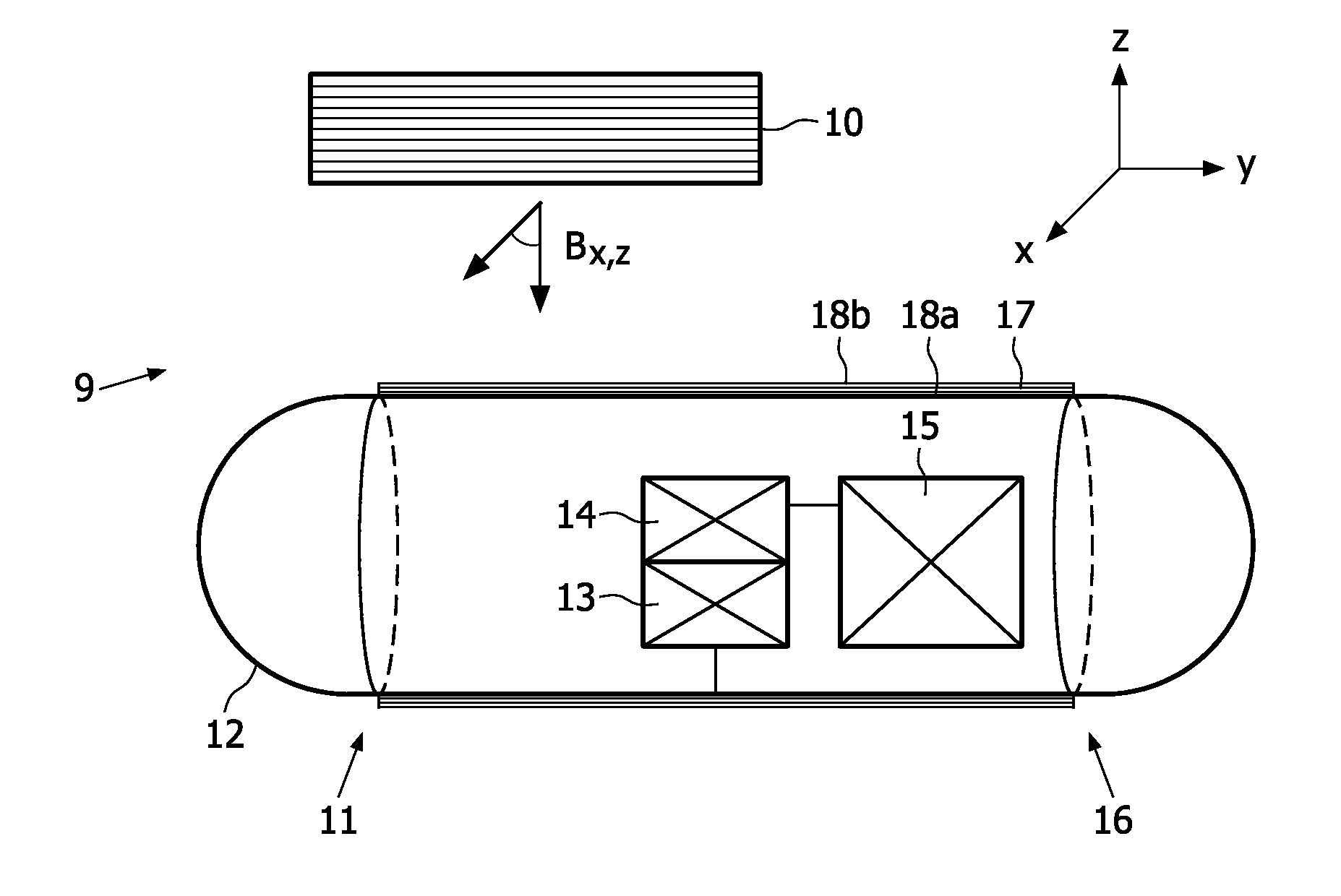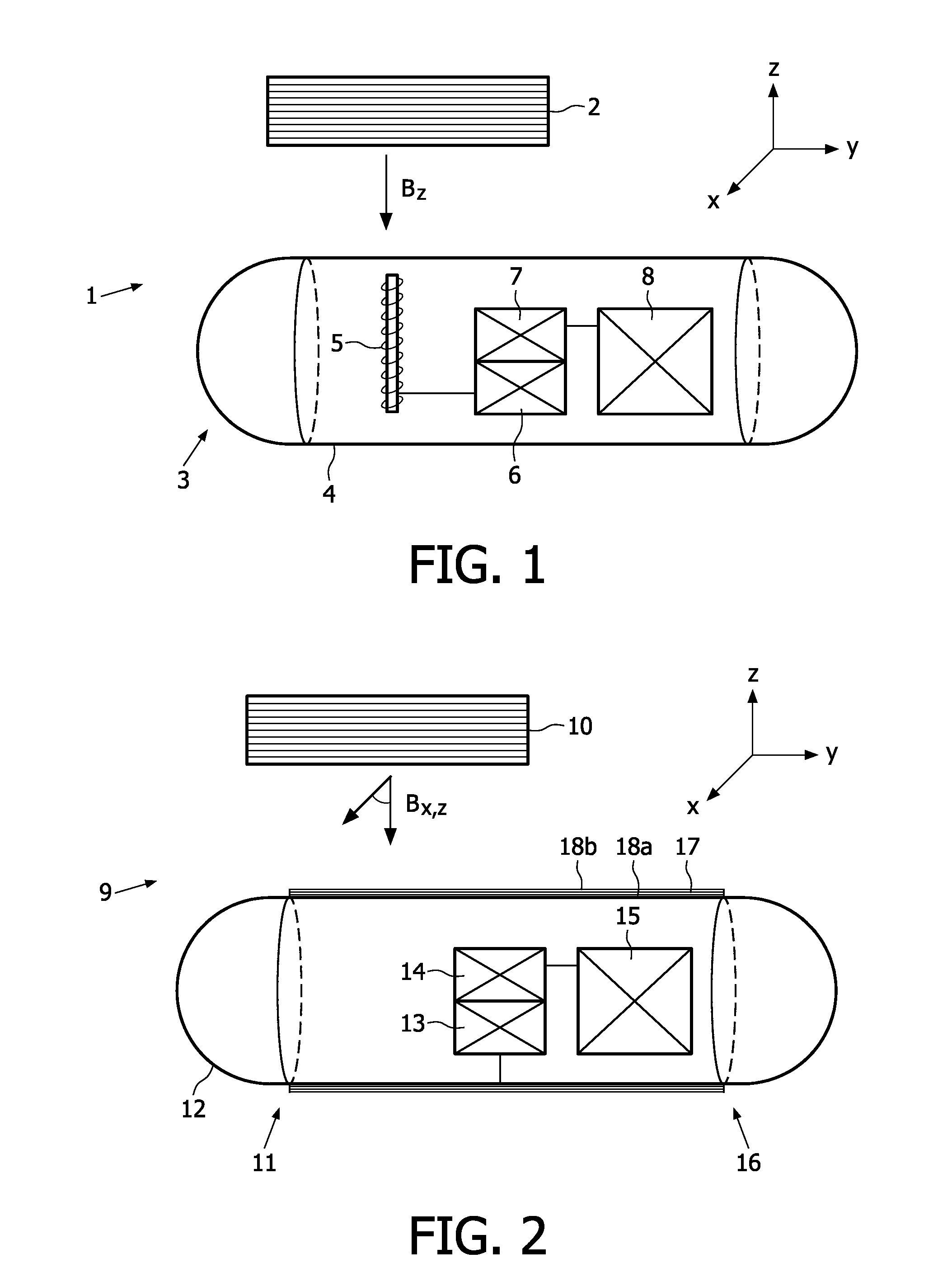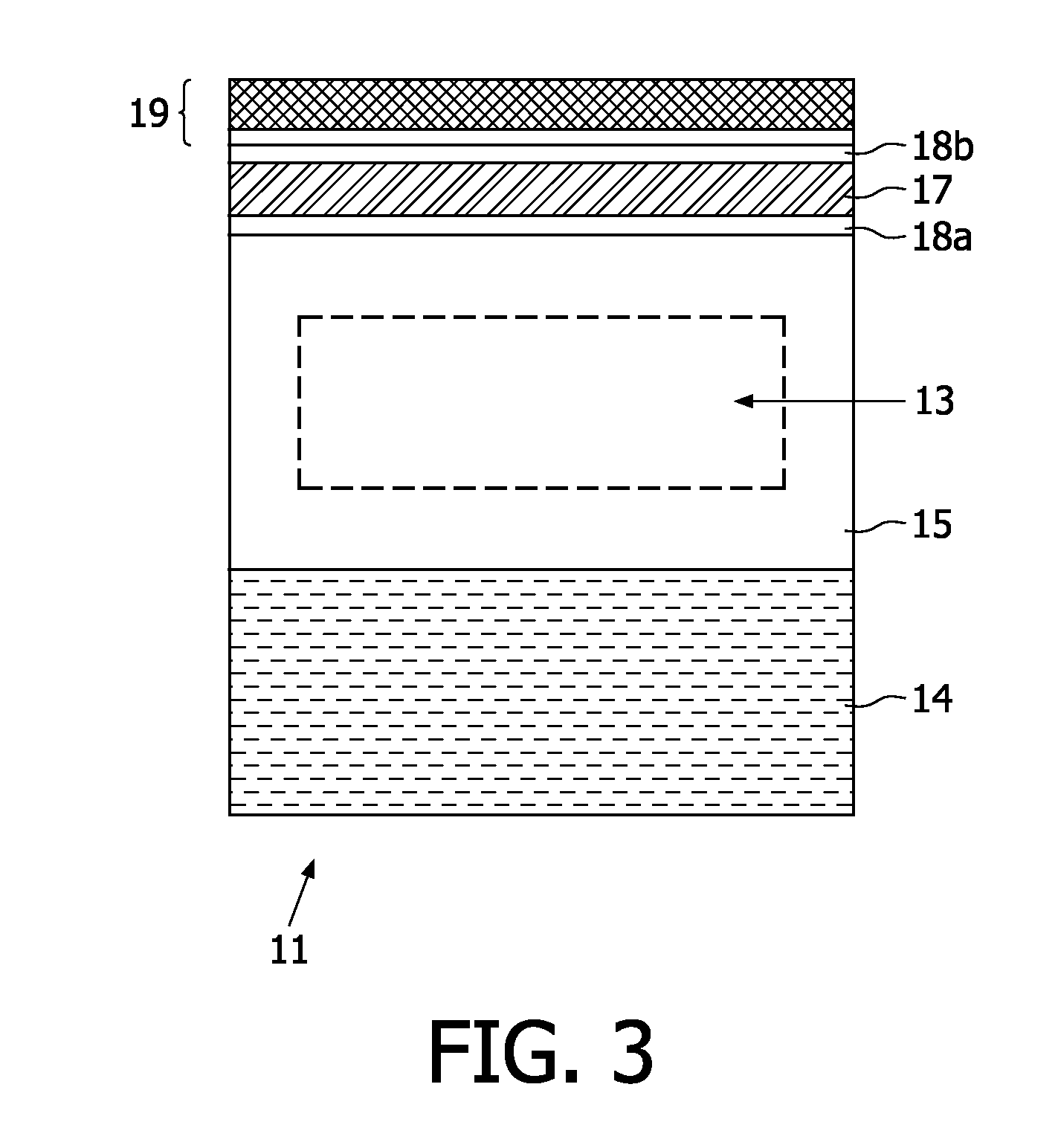Electronic device suitable for bioimplantation
- Summary
- Abstract
- Description
- Claims
- Application Information
AI Technical Summary
Benefits of technology
Problems solved by technology
Method used
Image
Examples
Embodiment Construction
[0015]FIG. 1 shows a schematic cross section of an assembly 1 of a magnetic charging unit 2 and a bioimplantable electronic device 3 known from the prior art. The known device 3 comprises a cylindrical pill shaped housing 4 enclosing a coil 5, a power management system 6 connected to said coil 5, a rechargeable battery 7 connected to said power management system 6, and an electronic component 8, such as a sensor, connected to said battery 7. By means of the charging unit 2 an alternating magnetic field B is imposed to the electronic device 3. The coil 5 will convert the magnetic field B into electrical energy which is used to (re)charge the battery 7. A first drawback of the known device 3 is that by means of the coil 5 merely a relatively poor and inefficient transfer of energy within the device 3 can be achieved. Moreover, the coil 5 is substantially sensitive for a magnetic field Bz which is perpendicular to each winding of the coil 5. In case the magnetic field would originate f...
PUM
 Login to View More
Login to View More Abstract
Description
Claims
Application Information
 Login to View More
Login to View More - R&D
- Intellectual Property
- Life Sciences
- Materials
- Tech Scout
- Unparalleled Data Quality
- Higher Quality Content
- 60% Fewer Hallucinations
Browse by: Latest US Patents, China's latest patents, Technical Efficacy Thesaurus, Application Domain, Technology Topic, Popular Technical Reports.
© 2025 PatSnap. All rights reserved.Legal|Privacy policy|Modern Slavery Act Transparency Statement|Sitemap|About US| Contact US: help@patsnap.com



